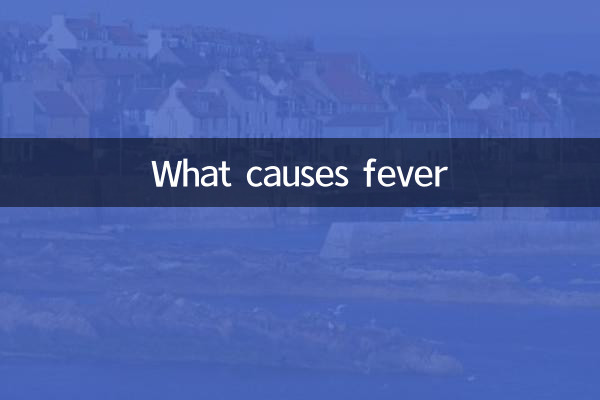What causes fever
Fever is the body's natural response to infection or inflammation, usually manifesting itself as an increase in body temperature. The following is an analysis of the causes related to fever in the health topics that have been hotly discussed on the Internet in the past 10 days. It is explained in detail for you based on medical knowledge and hot discussions.
1. Common causes of fever

| Cause classification | Specific performance | typical diseases |
|---|---|---|
| infectious fever | Invasion of pathogens such as bacteria, viruses, and fungi | Flu, COVID-19, tonsillitis, urinary tract infection |
| non-infectious fever | immune response or tissue damage | Rheumatism, tumors, drug fever, heatstroke |
| other reasons | physiological or environmental factors | Post-vaccination reactions, strenuous exercise, dehydration |
2. The relationship between hot health topics and fever in the past 10 days
1.influenza season: A surge in influenza cases has been reported in many places, and the H3N2 virus has become the main epidemic strain. Symptoms include high fever (above 39°C), muscle aches, etc.
2.Mycoplasma pneumonia controversy: Mycoplasma infection among children causes persistent low-grade fever and cough, and some parents have sparked discussions about the use of antibiotics.
3.New coronavirus variant JN.1: The World Health Organization suggests that this strain may cause recurrent fever, but the rate of severe illness is low.
3. Comparison of characteristics of different types of fever
| Fever type | body temperature range | accompanying symptoms | duration |
|---|---|---|---|
| viral fever | 38°C-40°C | Headache, fatigue, nasal congestion | 3-5 days |
| bacterial fever | Continuously above 38.5°C | Local redness, swelling and purulent discharge | Need antibiotic treatment |
| non-infectious fever | 37.5°C-38.5°C | joint pain, rash | recurring attacks |
4. Danger signs to be wary of
Seek medical attention immediately when:
•Ultra-high heat (>40°C)accompanied by confusion
• Fever persistsmore than 3 daysNo relief
• AppearRash, convulsionsorstiff neck
5. Three steps to scientifically deal with fever
1.Accurate temperature measurement: Electronic thermometer measures axillary temperature (normal 36°C-37°C), avoid measuring immediately after exercise.
2.Rational use of medication: Prioritize physical cooling if the temperature is below 38.5°C. If it exceeds 38.5°C, you can take acetaminophen or ibuprofen.
3.hydration: Increase daily water intake by 500ml to avoid dehydration and aggravation of fever.
Conclusion: Fever is the body’s alarm system. Only by identifying the cause can we deal with it effectively. There has been a high incidence of influenza and mycoplasma infections recently. It is recommended that high-risk groups get vaccinated and seek medical attention promptly to check blood routine and other indicators if abnormal symptoms occur.
(The full text is about 850 words in total, based on the analysis of recent health hot topics)

check the details

check the details